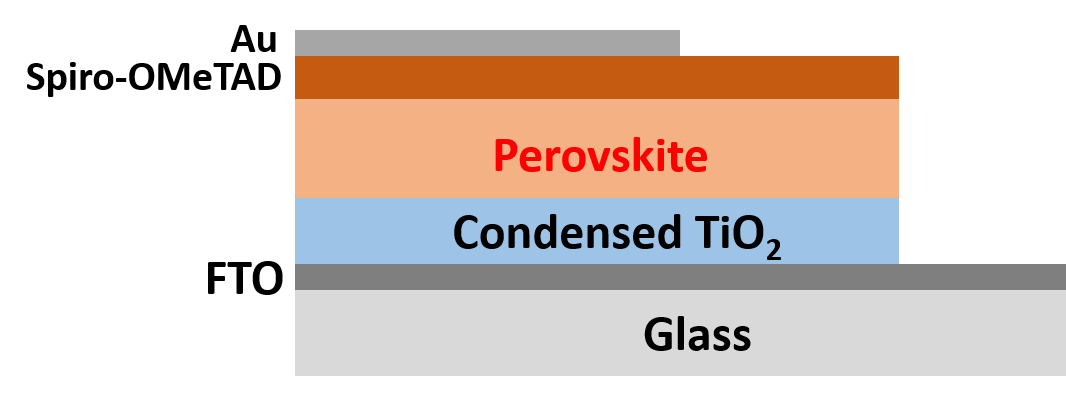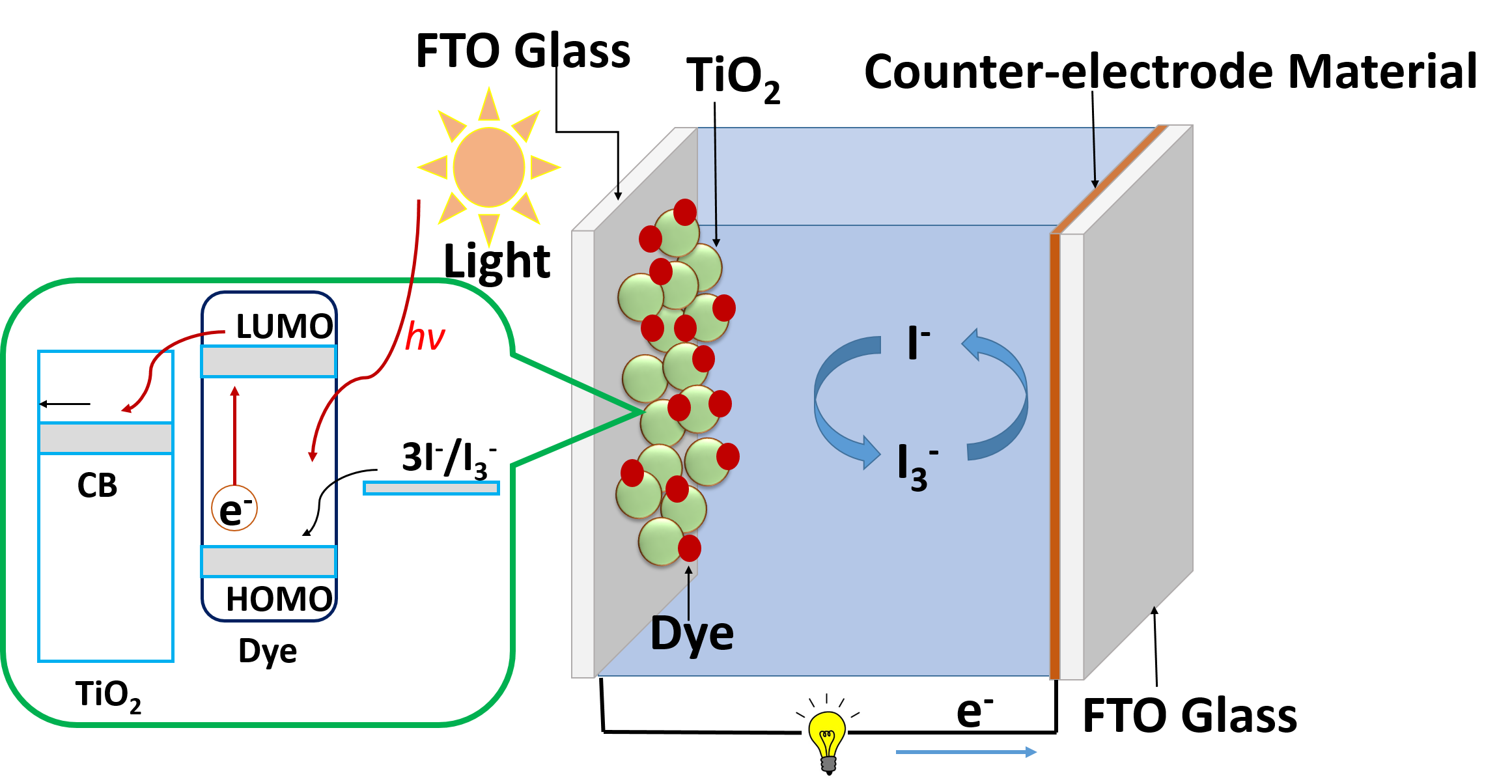Research
Welcome to the Nanomaterials for Renewable Energy and Environment Laboratory (NREEL). We are located in Donald L. Beggs Hall Room 130. The following introduction gives a brief overview of our research group.
1. Materials for Solar Energy Conversion
-
Perovskite Solar Cells

Perovskite is named after Russian mineralogist Perovskite who first characterized the crystal structure of ABX3-type (X=halogen, oxygen; e.g., CaTiO3) inorganics. The superior optoelectronic properties of organometal halide perovskite CH3NH3PbX3 (X=halogen) such as high absorption coefficient, long-distance exciton diffusion, and large charge carrier mobility shed new light on fabricating high-performance, low-cost, and stable solar cells. In this project, we focus on developing new perovskite photovoltaic materials, engineering device architectures of perovskite-based solar cells, and exploring photophycial mechanisms of perovskite-based solar cells, thereby leading to high-efficiency solar cells.
-
Dye-Sensitized Solar Cells

Dye-sensitized solar cells (DSSC) are widely recognized as a promising alternative to conventional silicon solar cells, which usually suffer from a high cost of manufacturing and installation. A great deal of research efforts have been made in DSSCs to achieve improved performance, including the rational design and exploitation of a wide diversity of dyes as light absorbers, the optimization of nanocrystalline TiO2 photoanodes of different architectures for dye loading and electron transport, the utilization of redox electrolytes with effective components for hole transport, and the replacement of expensive noble metal films (e.g., platinum) with other low-cost materials to serve as back-contact electrodes. In this project, we capitalize on hierarchically structured nanomaterials as electrode materials to yield high efficiency DSSCs.
2. Materials for H2 Generation and Photocatalysis
As the world energy crisis and pollution problems increase, it is imperative to take great advantage of clean energy. Solar energy has been considered as one of the most promising clean energies and has garnered much attention. There has been a considerably increased interest in using sunlight for hydrogen production and photo-degradation of environmental pollutants and toxics. In this project, we design various photocatalysts, which can efficiently utilize solar light (from UV light, visible light, infrared light to near-infrared light) to generate hydrogen and degrade organic pollutants.
3. Materials for Mechanical Properties Enhancement
Cement is a main component of concrete with nano-structures and multi-phases. As an important engineering material, concrete possesses an excellent compressive strength. However, microcracks, which appear during the deformation processing of cementation matrices, keep growing and thus decrease compressive strength. Various types of fibers, such as steel fibers, glass fibers, and polypropylene fibers, are used to inhibit the cracks. In this project, we design and synthesize various materials to imporve the mechanical strength of cement.

